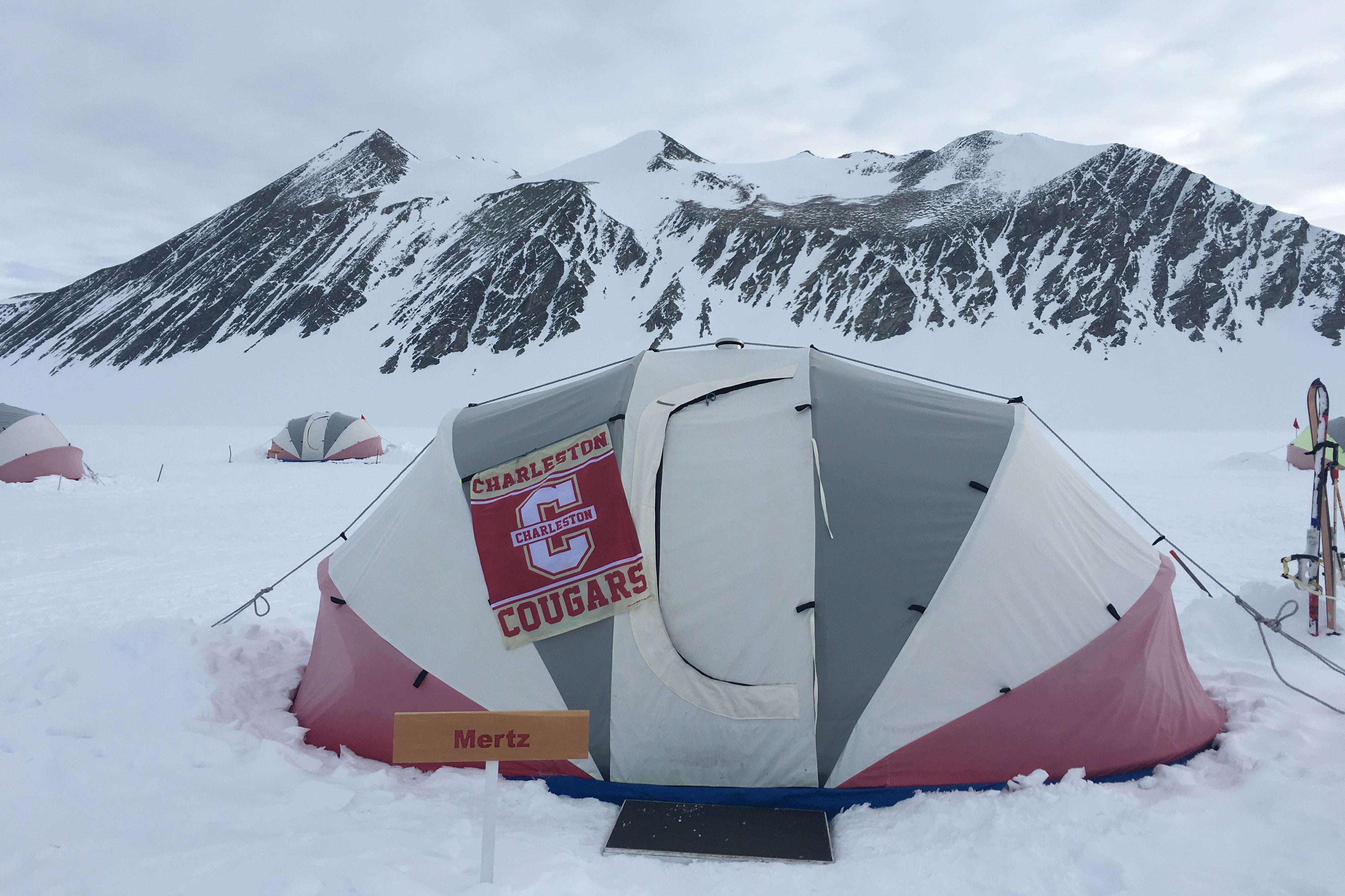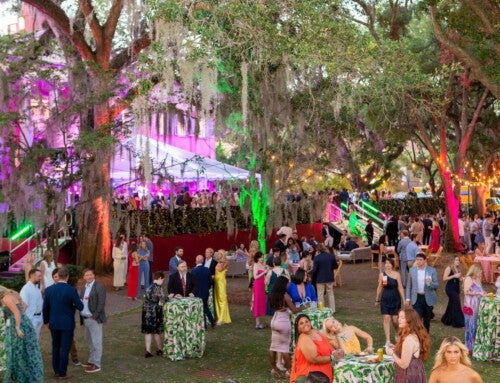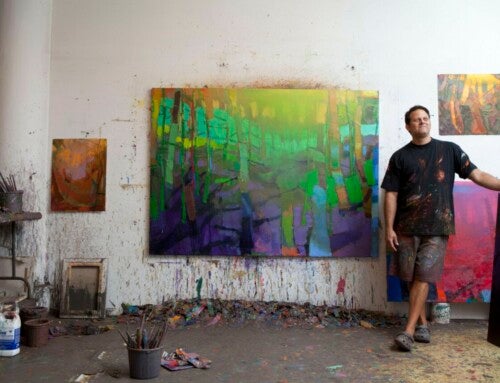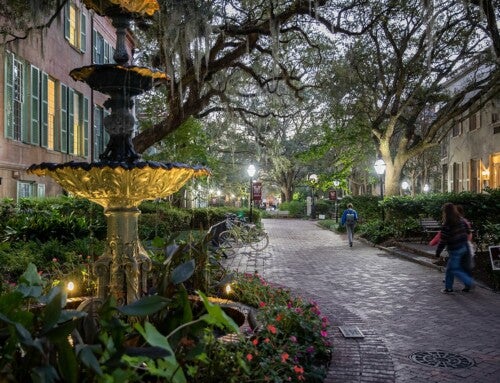Breathing, moving, thinking: Nothing is easy at 9,300 feet above sea level. Add in sub-zero temps, katabatic winds and nothing but ice and sky for as far as the eye can see, and just surviving takes some serious effort. And that’s without hauling 200 pounds of gear for 100 miles using only renewable energy.
Fortunately, Keith Sauls ’90 loves a good challenge.
“This is the kind of thing that takes everything you’ve got – and then some,” says Sauls, who on December 26 will leave for his third Antarctic expedition, flying on an Ilyushin plane from Puntos Caños, Chile, to the blue-ice runway at Union Glacier, where he will then join his teammates on the South Pole Energy Challenge (SPEC) – the first-ever expedition to the South Pole powered solely by clean-energy technologies.
Led by English-born polar explorer and environmental leader Sir Robert Swan (aka the first man to walk to both the South and North poles) and his son Barney, the eight-week trip commemorates the longest unaided march in history: the senior Swan’s 70-day, 900-mile journey to the South Pole in 1986. Joined by an environmental filmmaker and a guide, the father-son team set out to make history again last month – this time with the hope of driving change in the way we use energy.
“What we’re doing is groundbreaking because it challenges our current approach to energy use,” says Sauls, who will join the team for the approximately 100 miles that make up the “Last Degree” (89°–90° South) to the South Pole. “By proving we can use renewable fuels in the harshest conditions, this trip helps get us rethinking how we can approach energy moving forward for future generations.”
But let’s not get ahead of ourselves.
“You’ve got to take everything one step at a time,” says Sauls, who first learned about Swan and his lifelong mission to preserve Antarctica when Swan spoke at the College of Charleston in December 2015, inspiring his first International Antarctica Expedition (IAE) in March 2016. Then, in November 2016, Sauls joined the Swans and top engineers and scientists from Shell and NASA on the IAE 80° South Team (IAE80S) to test solar energy, wind power and different biofuels, including garbage, cooking grease and coffee grounds all mixed together and bottled. “It was all leading up to this.”
And so, at the beginning of December, Sauls set his autoreply to say he’d be off grid until further notice, packed up his things and headed for the beach, where he is spending the weeks leading up to his trip clearing his head and focusing on what matters – like pulling his Rouge Fitness weighted sled up and down the beach.
“Giving myself that space is key to mental preparation,” he says. “Plus, pulling the sled through the sand is the closest thing I can do to getting ready to pull it through the snow.”
His training also includes running half marathons with a 30-pound backpack, as well as military races like the 14-hour, 20-mile GoRuck Tough.
“That is a big part of me teaching my body and my mind to get through the stress – because you’re going to hit walls, so you have to train yourself to get over them,” says Sauls. “You have to block that ingress so that the fears don’t take over. It’s a lot about muting those thoughts.”
That’s especially important for Sauls, who will be charged with keeping the team’s fears at bay.
“My main job is keeping people from panicking,” he says, noting that “group think” is one of the biggest dangers of an expedition like this. “Group dynamics are huge. It is amazing how quickly things can deteriorate from just one very small mistake. You’re exhausted, not just from the physical strain, but that altitude will mess with your brain.”
That’s why it’s important to approach things slowly, methodically.
“You are sleeping eight hours and moving eight hours. The rest is packing and unpacking your gear,” says the team’s self-proclaimed ‘gear guy.’ “That goes super slow – in the same order every time – so it’s important not to make a mistake, because if you lay down your glove, it’s gone – and that’s the kind of thing that spirals out of control. If something fouls up with anything, everything else can fall apart.”
Aside from human error, the top dangers to explorers are the katabatic winds that can knock you down and dehydration, which can kill you – though being able to use solar energy to melt ice for drinking and cooking should solve that not just for the SPEC expedition, but for all expeditions that follow.
“It is a game changer,” says Sauls of the crockpot-looking, solar device NASA created that can melt a liter and a half of ice in 30 minutes. “There are 24 hours of daylight out there, so solar energy is the most useful of the renewable energy sources. The Goal Zero solar panels that we carry in our backpacks are a great advancement, too.”
Ultimately, overcoming all the physical, mental and logistical challenges of trekking to the South Pole is just a means to overcoming the bigger challenges to sustainable energy that future generations will face. That is, after all, the whole mission of not just the trip, but the driving force behind them: Swan’s 2041 Climate Force.
“When Robert Swan created the 2041 Climate Force, he handpicked millenials from around the world,” explains Sauls. “The hope is to get people involved now who in 2041 will be in high-powered positions in industry, in Parliament, finance and technology, to further the no-drill initiative. This is something that really matters to this generation.”
In fact, this generation is what made it matter so much to Sauls, too.
“It all started with a group of students challenging the College of Charleston Foundation to divest all fossil fuels,” says the managing partner at Exeter Venture Group and Apple Gold Partners, who was serving as the College of Charleston Foundation’s secretary and vice-chairman of its investment committee when the Foundation’s executive director at the time asked Sauls “to handle it. He said ‘I’m going to turn them loose on you.’”
Never one to back down from a challenge, Sauls started his plan of attack.
“I came in defensive, but I wanted to have my research to show these students that this kind of thing wasn’t possible. My thoughts were, ‘I’ll just teach them how wrong they are,’” laughs Sauls, who – in addition to serving on the School of Business Board of Governors, initiating the Boundless Opportunity Scholarship, endowing the R. Keith and Melissa G. Sauls Undergraduate Scholarship and giving to the CofC fund, the School of Business Dean’s Excellence Fund, the Cougar Club and the Leadership Endowment Fund – was the 2005 recipient of the College of Charleston Alumni Association’s Distinguished Alumni Award and the 2016 recipient of the School of Business’ Howard F. Rudd Jr. Business Person of the Year Award. “So, in the process of getting ready for that battle, I did a lot of research in the field of ESG [Environmental, Social Governance] and impact investing, and I realized the need to reframe the argument away from ‘divesting,’ and instead ask, ‘Can we pick better companies and find ways to invest that meet the Foundation’s core mission of making a profit for students and scholarships while still making a difference?’”
RELATED: Read about Sauls’ installing the CofC flag at the top of Mt. Kilimanjaro.
The student group’s initial demands resulted in the College being among the first in the country to formally incorporate ESG investing as a goal of its Investment Policy Statement.
“The students had a huge impact. ESG research in the future is overtly part of the Foundation’s policy now,” says Sauls proudly. “It was a huge win for the students.”
It was also a huge win for Sauls, who “realized that being defensive can’t change the world. You have to do your homework, have the experience and speak the language if you want to have credibility, particularly with millenials,” he says, noting that – once he returns from the SPEC in January – he wants to engage more families, family businesses and foundations to direct their investments to incorporate ESG. “My primary goal is to sit between multiple generations and encourage them to move in the same direction. But you’ve got to have that credibility first. That’s how you change the world.”
And Sauls, for one, is up for that challenge.
Track the SPEC expedition online or follow the team on social media via #2041ClimateForce
Featured image: CofC flag on Sauls’ tent at Union Glacier in December 2016, when he joined the IAE80S Team to test biofuel energy sources.






